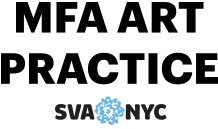Heide Hatry
Heide Hatry, Pillar of Wisdom, 2023
The Summer 2023 Artist in Residence is Heide Hatry.
New York-based German artist Heide Hatry is best known for her body-related work often employing animal flesh and organs or other discarded, disdained, or "taboo" materials. Among her fundamental preoccupations are identity, gender roles, the nature of aesthetic experience and the meaning of beauty, the effects of knowledge upon perception, the human exploitation of the natural world, and the social oblivion that permits atrocity to persist in our midst.
Hatry has curated numerous exhibitions and has shown her own work at museums and galleries all over the world. She has produced more than 200 artist's books, edited dozens of art catalogues, and her larger projects, like Skin, Heads and Tales, Not a Rose, and Icons in Ash were documented in monographic books. See her work here.
What was the last thing you made?
A unique artist’s book entitled Pillar of Wisdom and, in a rather different category, the “Ur-Ur-Sonate” performance: Miar meegêd älâs wah glai isch (in Swabian).
What was the last thing you read?
I often read several things at once:
So right now it’s Sarah C. Brett-Smith: The Making of Bamana Sculpture: Creativity and Gender, Heinrich Heine‘s Harzreise, Xavier de Maistre’s Voyage Around my Room (which I read today), and Malen Denis’s Litio. But those last three don’t exactly typify my normal reading: this happened by chance, and what I find especially interesting about them is how emotionally, conceptually, and stylistically similar they are for such ostensibly divergent works.
And I always have Hölderlin’s and Paul Celan’s poems on my nightstand.
What was the last exhibition you saw?
Matthew Barney’s video installation: Secondary, at his studio; and Mark Bradford’s “You Don’t Have to Tell Me Twice” at Hauser & Wirth.
Who do you most admire?
Intellectuals with empathy, and artists that make you feel something intense. One who came first to mind is Carolee Schneemann, whom I adored both as a person and as an artist.
How has your practice changed?
I have always been interested in the ephemeral, and much of my work has, in fact, disappeared. But in the last few months, I’ve been making books and Boli figures, both of which (although there are certainly dialectically interesting aspects of the ephemeral about them) are typically supposed to have been created with the implication of permanence.
What motivates your practice?
Material!
Material speaks to me, excites me, and utterly inspires me to say or to show things that make this damaged world less painful…or perhaps to capture its pain in a way that ennobles it, and us, and gives us cause to reflect.
Your favorite artwork made before your lifetime?
Renaissance portraits of women, like Leonardo’s Ginevra de Benci, or Petrus Christus’s Portrait of a Young Woman. And one of my favorite details of Bernini’s sculpture in the Galleria Borghese in Rome: Pluto’s hand on Proserpina’s thigh.
Your favorite artwork made during your lifetime?
Obviously, any answer to questions of this sort requires a kind of falsification, reduction, and even denial of how we actually think or experience or feel, but it’s also fun to force myself to choose one: so, Volkszählung by Anselm Kiefer.


